
Samantha Rohn

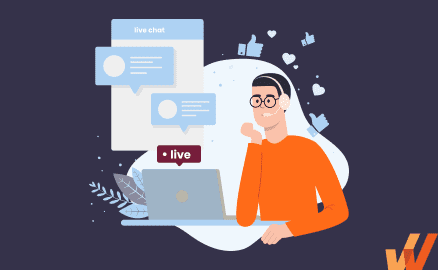
In a world where customer-centricity is the key to business growth and sustainability, leveraging customer education and training as a tool for engagement has never been more critical. Enter a learning management system (LMS) specifically designed for customer education and training.
This guide provides an in-depth exploration of LMS built for customers and partners, contrasting it with the conventional LMS typically employed for employee training. We’ll shed light on the unique benefits of a customer LMS and discuss its capabilities and features that set it apart from traditional learning models.
To empower you with the right tools, we’ve curated a list of the nine best LMS vendors specially designed for customer education and training. Our goal is to provide you with a comprehensive toolkit to build a customer education strategy that not only improves product usage, but also transforms satisfied customers into devoted brand ambassadors.
A customer LMS is a software platform used to create, curate, deliver, and track learning resources served to your customers. It is the evolution of traditional learning platforms, fine-tuned to focus on your most important asset: your customers.
In the traditional sense, a learning management system is designed to help organizations roll out educational experiences to their employees, help develop and cultivate team member skills, track their performance, and keep them engaged through their chosen learning path.
A customer LMS does exactly the same, but in this case, for your customers—it serves as an education and learning hub where a brand’s customers can learn how their products work, how to resolve common errors, find training resources, integrate with third-party tools, make the product a part of their workflow, and ultimately drive customer adoption.

The most significant benefit of a customer learning management system is that it makes customer education predictable and trackable. Instead of sending over branded PDFs, videos, and Word docs via email, you can use an LMS to create a uniform experience for all learners, track their progress through different learning paths, customize their experience based on the features or products they’re signed up for, and keep them engaged with regular notifications.
Serving your customer education resources through a learning management platform projects a coordinated, refined brand image, compared to sending videos, screenshots, and voice clips to customers haphazardly. A customer LMS serves as a source of truth for all customer education documentation, resources, and support content, and gives your customers the impression that you actually put effort into producing and maintaining the content vs. improvising on the fly.
A customer LMS makes it easier to measure customer engagement with your education resources by tracking educational and training-based KPIs and customer analytics such as course completions, trainee drop-off rates, test scores and assessment pass rates, exit surveys, and learning satisfaction ratings. These metrics help you understand whether you need to simplify your curriculum, break it into bits, assign better instructors, or even scrap courses your customers routinely skip (because they have prior experience).
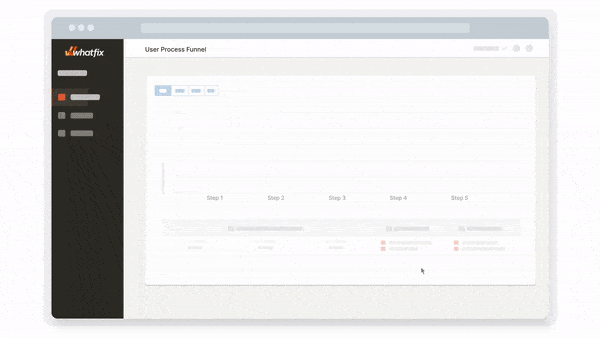
Instead of a one-size-fits-all approach, customer learning management platforms make it easy to create different learning paths customized for the various personas your business serves and different areas of the customer lifecycle. That way, you can emphasize their unique challenges and appeal to their use cases better than a generic resource can.
Unlike 1:1 coaching sessions and webinars where a trainee has to be synchronously present, your customers can access the resources on your LMS at their convenience—on a smartphone, during lunch break, or while in traffic. Wherever you are and whatever device you access it from, a learning management platform guarantees the same quality of experience to hundreds, thousands, or even millions of employees without any additional changes.

Customer education reduces support costs proactively. It teaches your users how to navigate your product, deflect common support issues, provide self-service customer support, and customize it to their use case—before they need assistance.
A survey of 2,800 respondents by the Technology & Services Industry Association revealed that 68% of customers reported using products more after undergoing a training program, while 56% said they used more features than they would if they were untrained.
And it’s not surprising— customer education helps customers understand your product better, including how it fits into their ecosystem, and how they can customize it to their needs instead of using the default options.
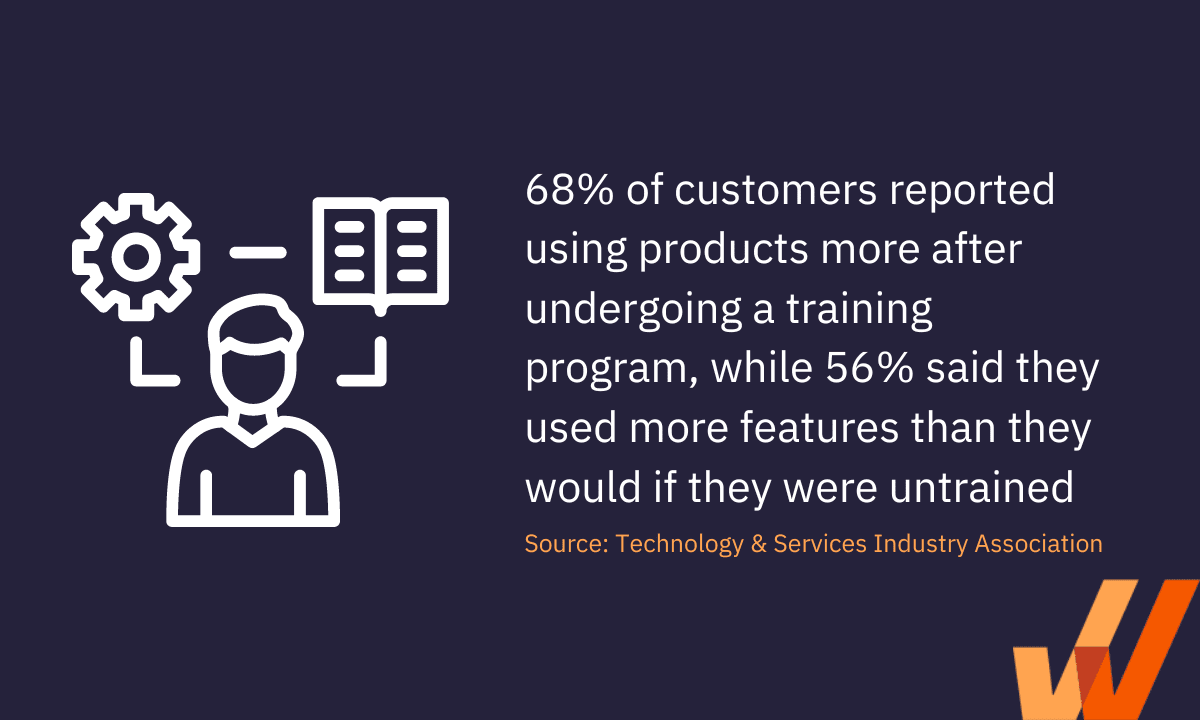
This list of features is designed to serve as a guide to help you pinpoint which features you’d want to integrate into your customers’ learning experience, and narrow down to the LMS platforms that combine as many as possible in a way that works for your brand.
Ideally, you should be able to ‘own’ a customer learning management system—customize design elements, reorder the user interface, modify login screens, redesign notifications, prompts, and libraries, and even integrate with any existing learning resources, wikis, guides, and product documentation you already have.
Smartphones have been capturing an ever more significant share of web traffic, and according to data collected by Statcounter, currently 51.52% of all web traffic comes through mobile devices. Anecdotally, it’s impossible to walk through the streets, subway, or the shopping mall without seeing someone hunched over looking at the phone.
A mobile-friendly customer LMS will help you cultivate more engagement, even when your customers are on the go and don’t have access to a desktop device.
Tracking user engagement helps you understand where you might need to intervene in your brand’s learning programs to simplify the interface, make resources bite-sized, and gamify the experience to keep users engaged. But none of that is possible if you can’t access usage and user engagement metrics to understand your customers’ sentiments towards your learning resources.
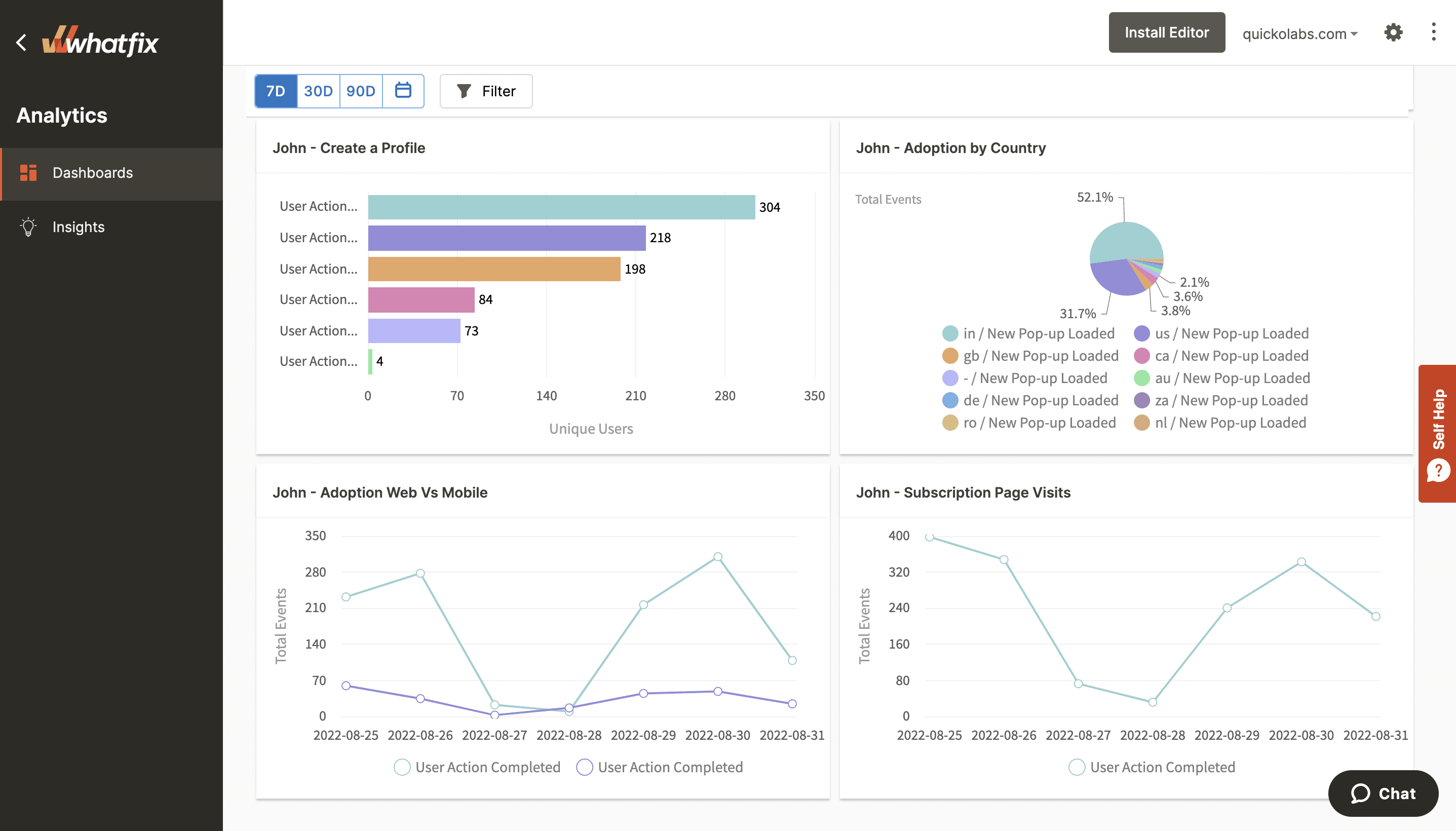
Training gamification for customer learning includes elements like progress scores (karma), completion leaderboards, and AI-enabled chatbots that can engage users and turn the learning experience into a virtual challenge for them to beat. You can also utilize in-app surveys and quizzes to help create an interactive learning experience.
Can you import your existing learning resources (videos, product documentation, tests, wikis, guides, and explainers)? What formats are supported? Is their platform SCORM-compliant so that you can export your content easily to other databases and tools? Can you embed live online resources (e.g., Vimeo and YouTube videos) into your prospective LMS platform?
Each customer LMS is different, but many will be SCORM-compliant and enable your organization to provide multimedia education and training content to provide the most effective learning style for your customers.
A customer LMS enables organizations with intuitive tools to create customer educational learning content inside its platform. It also provides editing logs, revisions, template creation, and more to help empower your L&D tools with the instructional design best practices to help create effective customer educational content.
Although most businesses that create in-house customer training programs don’t bother about the social proof angle, you need to factor that capability into your decision-making when you’re choosing a customer LMS platform— especially if your brand maintains a large ecosystem of third-party experts, partner agencies, and technicians whose skills can apply across the board (e.g., Salesforce and HubSpot).
To start, your LMS of choice should offer automated certificate tracking and authoring to eliminate the need for manual recordkeeping and help users view their certificates easily. Likewise, your chosen LMS must have sharing capabilities to ensure customers can list the courses they’ve completed on third-party platforms (e.g., Linkedin).
Whether it’s via email, Slack, mobile, or desktop alerts, push notifications help keep learners engaged with:
Here are nine of the best customer LMS vendors to explore when researching new LMS platforms for training customers.

Whatfix is a digital adoption platform (DAP) that enables enterprises to educate and engage customers at scale, simplify user education, and remove friction from the onboarding process with in-app guidance and self-help support capabilities that overlay on any SaaS or desktop application. Whatfix is designed with an Analyze, Build, and Deliver ethos that focuses on:
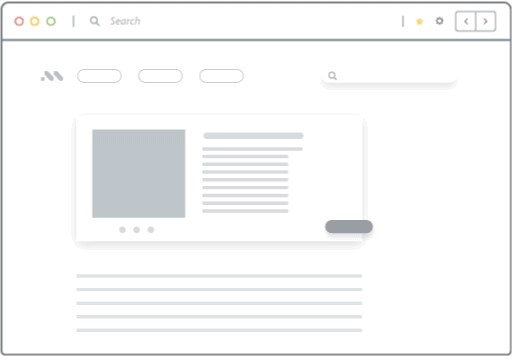
More than just a customer LMS where customers can read through pages of technical documentation, Whatfix helps you serve helpful content on-demand and at their own pace.
Create contextual user onboarding flows, drive adoption of new features, and make in-app announcements with Whatfix
Whatfix is a no-code digital adoption platform that enables product managers to create contextual in-app guidance, product-led user onboarding, and self-help user support – all without engineering dependencies. With Whatfix, create branded product tours, user onboarding checklists, interactive walkthroughs, pop-ups, smart tips, and more – all enabling customers and users with contextual guidance at the moment need. With Whatfix, analyze, build, and deliver better user experiences.
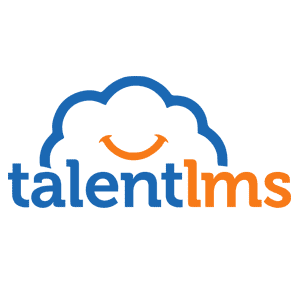
TalentLMS is an online training platform for creating customized learning paths and scaling them across your user base. Compared to most of the customer LMS platforms we’ve reviewed here, TalentLMS supports a wider range of content formats, lets you automate repetitive educator tasks, and can be customized beyond the basics (uploading a logo, color theme, etc.) to suit your brand.

Key features:

Skyprep promises to help businesses “turn buyers into loyal repeat customers” with an all-in-one customer training experience that guarantees wider reach across your customer base. Their platform offers powerful workflow automation, enterprise-grade security, advanced reporting, and a wide range of third-party integrations with the rest of your stack.
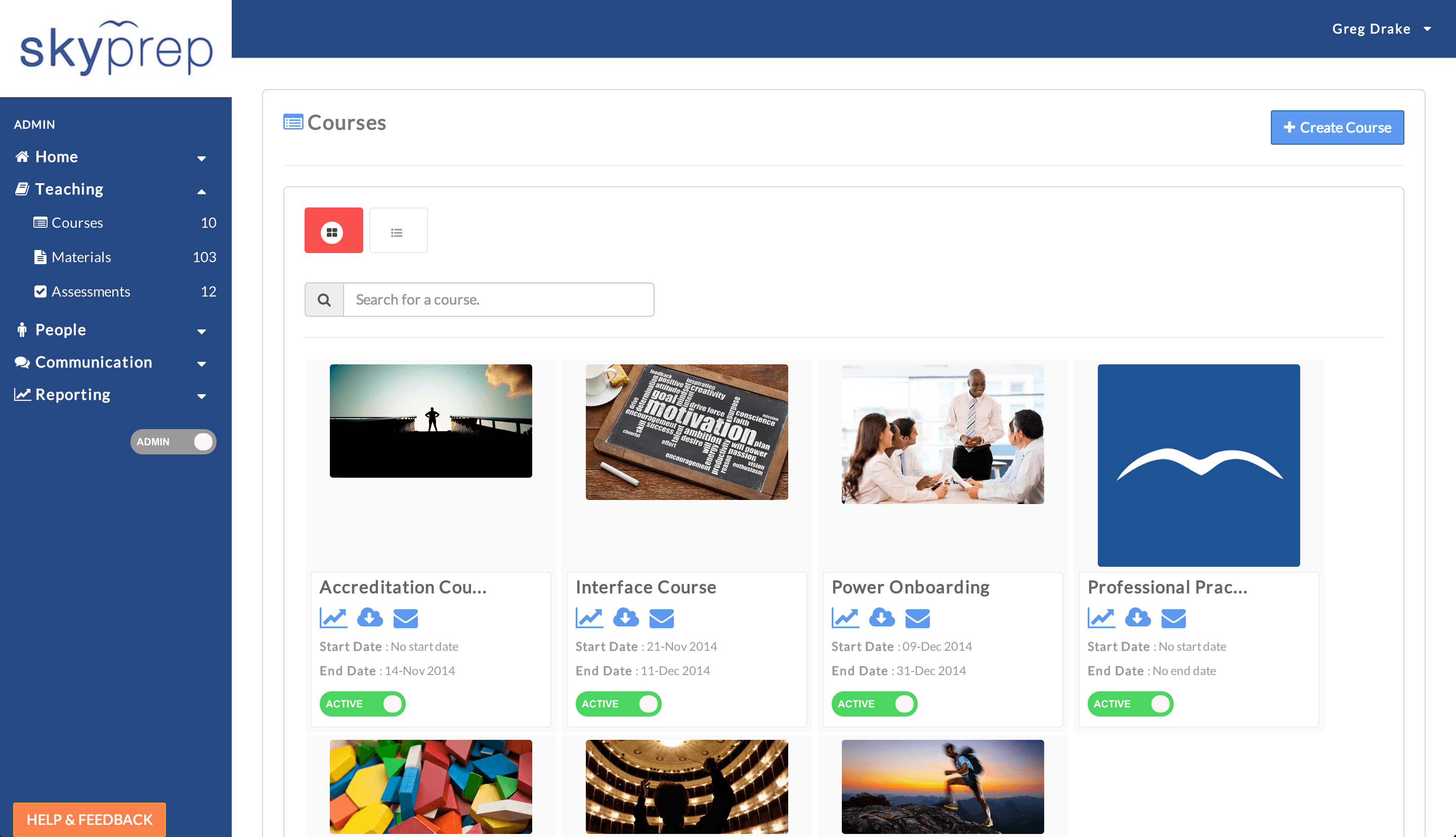
Key features:
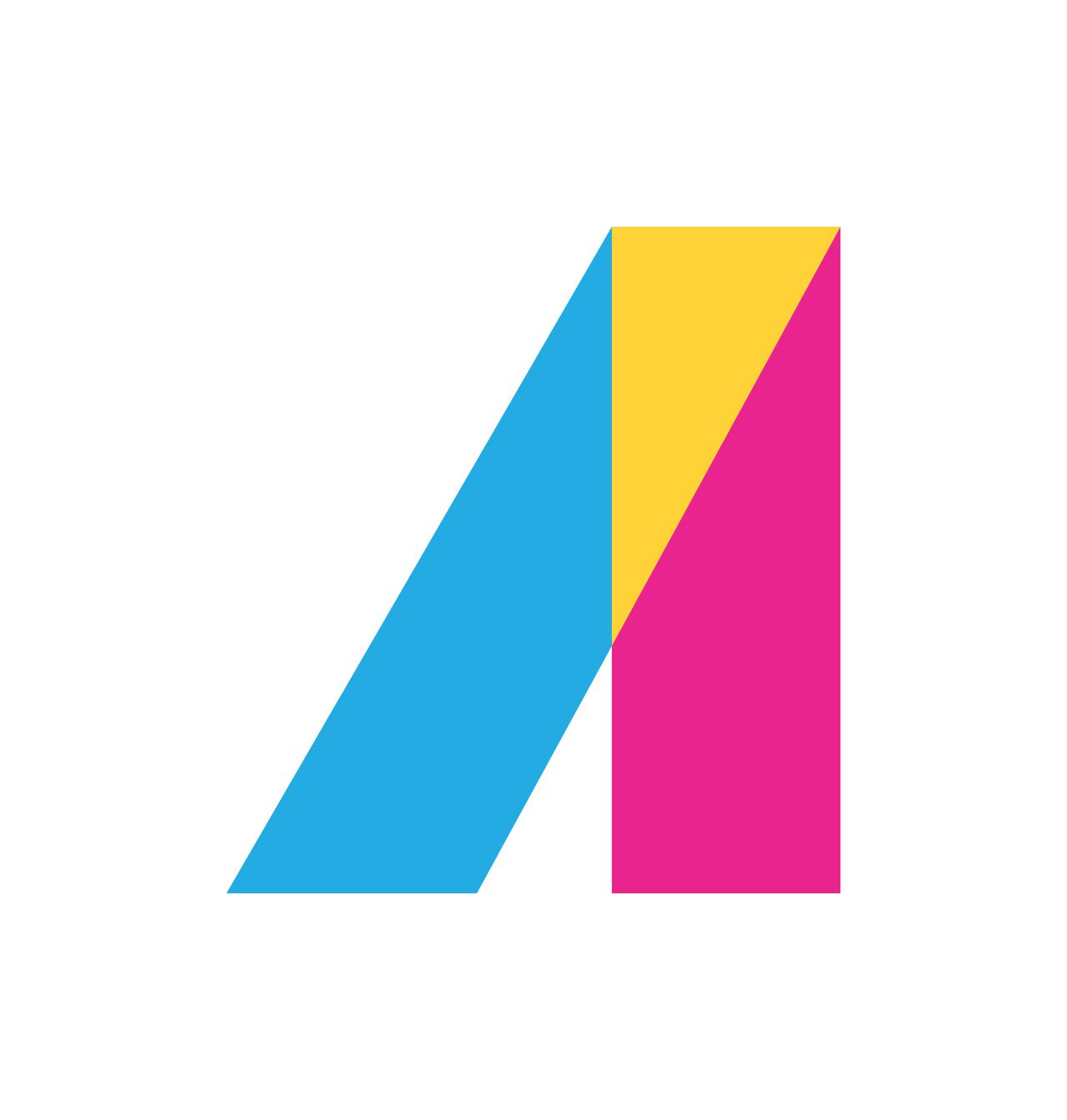
Absorb helps you ramp up customer education with an interactive learning experience, bite-sized resources, and a customizable on-brand interface. Absorb’s standout feature is the platform’s high degree of customizability and the wide range of potential solutions you can build on top of it. Apart from native integrations with your CRM and content authoring tools, you can use Absorb’s RESTful API to build custom applications and integrations suited for your specific use cases.

Key features:
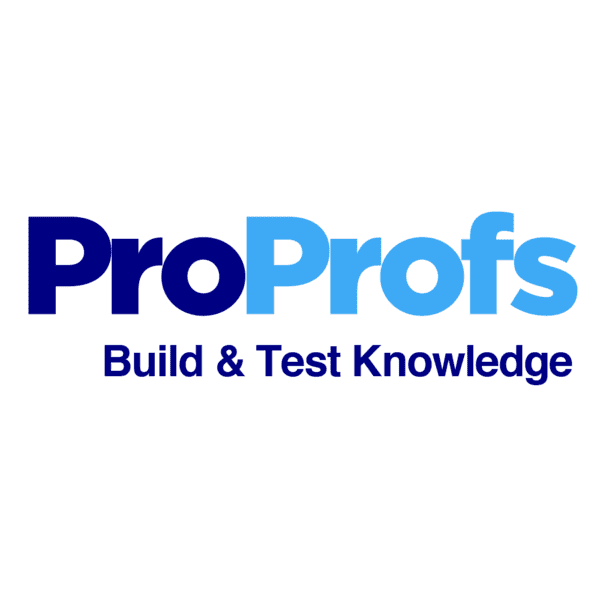
ProProfs has an entire ecosystem of enterprise customer engagement tools, including SaaS solutions for integrating helpdesks, knowledge bases, and live chat with your online channels. ProProfs’ LMS lets you create courses and resources from scratch, import your existing content, customize their product’s interface to suit your brand, and track your learners’ progress in real-time.
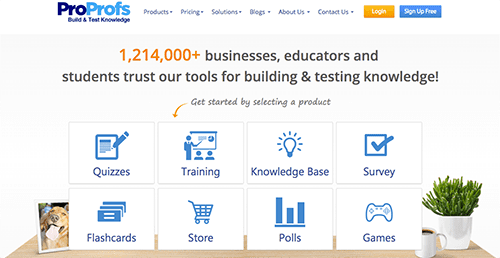
Key features:
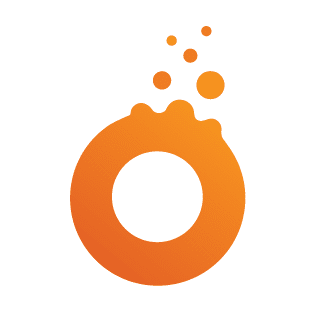
eFront is an enterprise learning management system for companies that want an added layer of customizability over their customer learning experience. You can opt to either self-host eFront on your servers or on a private cloud, expand your learning management scope by integrating eFront with the rest of your stack, and resell courses and training programs using their eCommerce integration.
Likewise, eFront is SCORM-compliant, supports reusable content modules, and has a native assessment engine for Q&As, tests, surveys, quizzes, and reporting.

Key features:
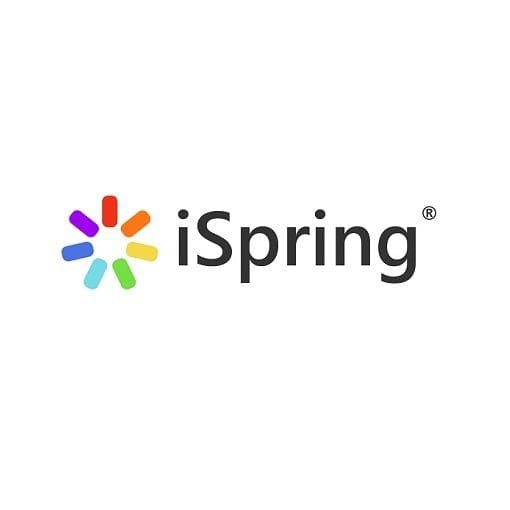
iSpring offers learning management features designed for growing companies looking to provide extensive, branded education programs for their employees and partners.
Using iSpring, your learners can go through learning paths at their own pace, get automated progress reports, notifications, and deadlines, provide feedback via chat and reactions, and engage with interactive multi-format content on mobile and desktop.
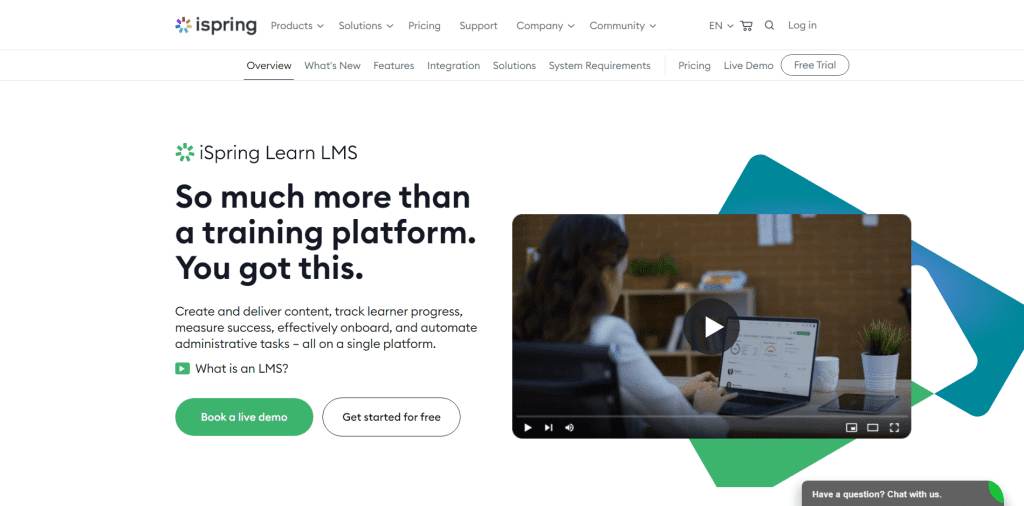
Key features:
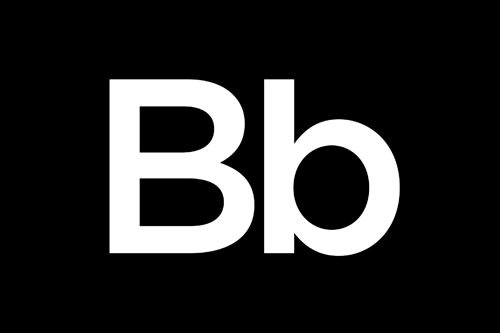
Blackboard offers a thoughtfully designed training experience where learners can see their entire curriculum in one place, track their performance with real-time insights, study and take assessments on the go, and get help if they’re struggling.
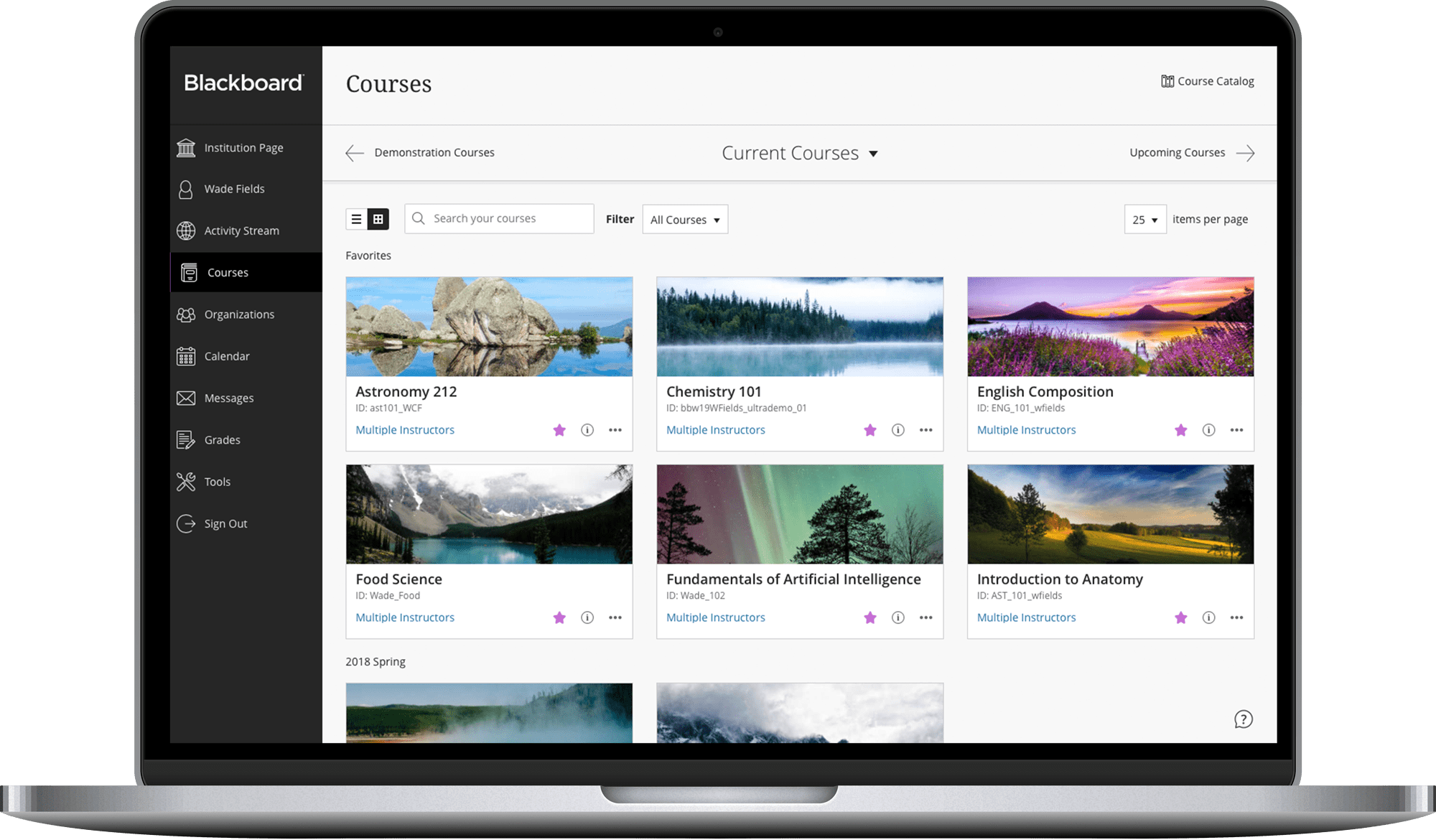
Key features:
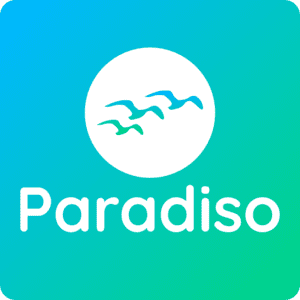
Paradiso is a complete learning experience platform (LXP) that’s designed to help customer educators save time and cost on L&D programs, track relevant metrics (attainments and course completions) with detailed graphs and reports, create multiple learning paths for users, and support learning across mobile and desktop devices.
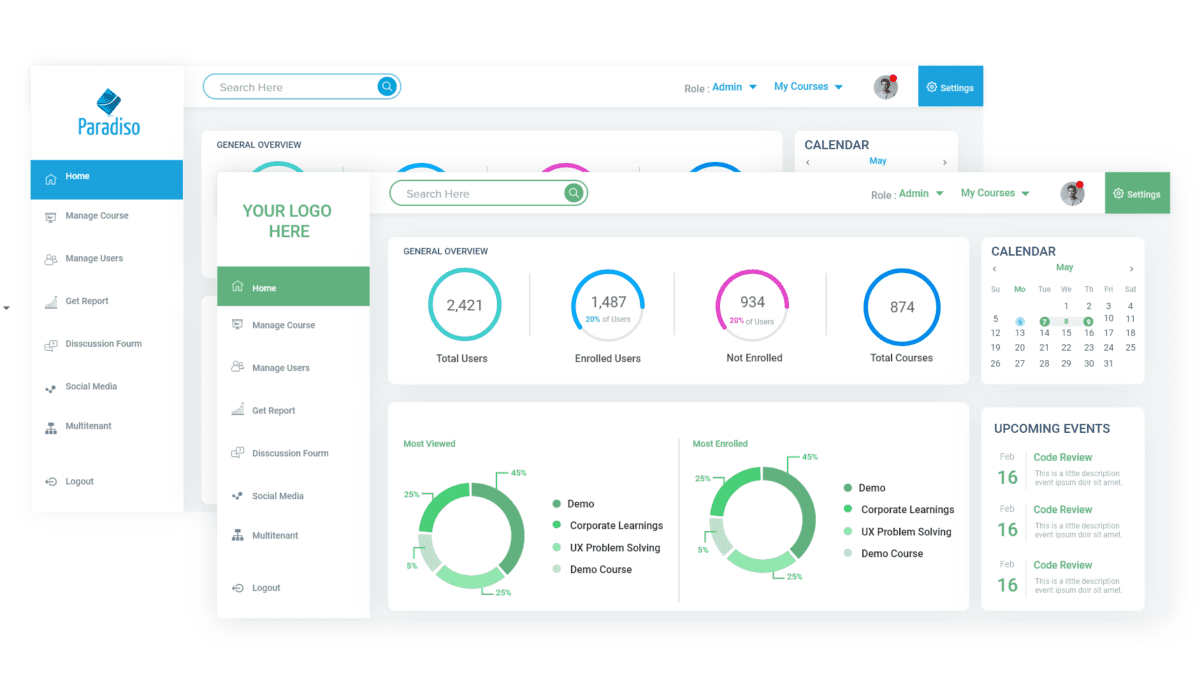
Key features:
After you select a customer LMS, things don’t simply work. You’ll need to build a team that will develop and own your LMS implementation– from planning, launching, communicating the launch, driving adoption, and providing end-user support.
Set clear targets your learning management program should help achieve, both on an individual level and across your entire customer base. For instance, you can shortlist several objectives such as:
These are all subjective targets for illustration, but the point still stands: setting goals for your customer LMS deployment helps track whether you’re on course to derive a positive ROI from your investment and if you need to change anything in your learning program to course-correct.
Typically, your custom base will have a wide range of personas with different use cases. Your customer learning program should identify each of those segments and create content specialized to them. For example, Intuit might be an accounting and bookkeeping platform, but the needs of a CFO running a billion-dollar Fortune 500 company would differ from that of a bookkeeper overseeing accounting for a startup with six employees.
Your customer education content strategy serves as a roadmap for producing the resources you need to serve your customers, including the:
Here’s where you add your logos, banners, typography, and brand design elements to the LMS user interface. Apart from these visual changes, the real work is in customizing courses, learning paths, and programs for your customers using language and content suitable to each learner’s persona and skill level.
You can opt to either create content from scratch or import your existing learning resources—assuming the new platform you’re switching to is interoperable with the solution you’re using in the interim. Some LMS platforms, like Paradiso, have a wide range of introductory courses while others offer generative AI authoring tools that you can use to convert scripts to videos and voiceovers with human avatars.
You’ll need to create a customer communication strategy to support the launch of your new customer education and training software portal. They’re different stages of the customer experience where you can promote your learning resources, such as during onboarding. You can also introduce it in welcome email drips or include it as part of the upgrade experience, especially if your product has multiple tiers with different levels of complexity.
Tracking your learning engagement metrics will show you a detailed picture of how many customers are engaging with your content, including competition rates, test scores, pass rates, and customer reviews. Better still, you can use behavioral analytics data like session replays, heatmaps, and user journey analysis to understand where your customers face challenges with your learning management system’s interface.

As your industry and company’s products and services evolve, you’ll need to refresh your learning management curriculum regularly to keep it up-to-date. To do that, you can engage your learners, instructors, and administrators in a needs assessment to help you understand where your stakeholders think the learning resources might be inadequate.
From the technical angle, you’ll need to frequently check for updates released by your LMS provider and make sure you always install new releases and patches promptly; likewise, it’s advisable to keep experimenting with plugins (in a sandbox) so you can uncover solutions that might enhance your learning program even more.
Like every other piece of enterprise technology, a customer LMS requires intensive technical resources to integrate with the rest of your stack and customize its UI to ensure it’s user-friendly and scales with your organization as your customer base grows.
Here are three of the most critical challenges you will face as you implement an LMS for customer education and training.
A learning management platform isn’t a standalone system that can function independently—at the very least, it needs to integrate with your CRM (to automatically update permissions and the type of content customers have access to), your existing CMS, and other third-party tools where you’ve stored your learning content.
As a result, you might need to divert engineering resources or bring in an implementation partner (for a non-trivial amount of money) to help you set it up and ensure all LMS integrations are working properly.
Building a content library is time-consuming and costly, especially if you’re trying to accommodate a large user base with different personas, learner backgrounds, skill levels, and learning styles. It’s even more of a challenge if your organization hasn’t previously used any learning management platform, since you’d have to start from scratch to record videos, create courses, and build different curricula for all your customer segments.
Your customer LMS platform of choice also might not support certain types of multimedia, or may not be designed to render interactive content experiences like quizzes, group tests, and simulations.
As your customer base grows, you’ll have more learners accessing your LMS through different learning paths and consuming different types and formats of content. As that number grows, the technical resources you need to sustain that demand will increase proportionally, especially if your LMS is hosted on-premise. Otherwise, if you depend on a SaaS solution, your pricing will most likely go up.
In a sense, a learning management system serves as a second brain for your customer experience program—it helps you coach customers at scale, personalize the training process, and democratizes learning since your learners can access your content on mobile, desktop, etc. But that advantage can become a little problem since LMS platforms try to do so much and your users might find them bloated and unwieldy.
A digital experience platform like Whatfix overlays your LMS solution and helps your learners navigate your educational resources easily, using:
Learn more by setting up a Whatfix demo today.

Thank you for subscribing!